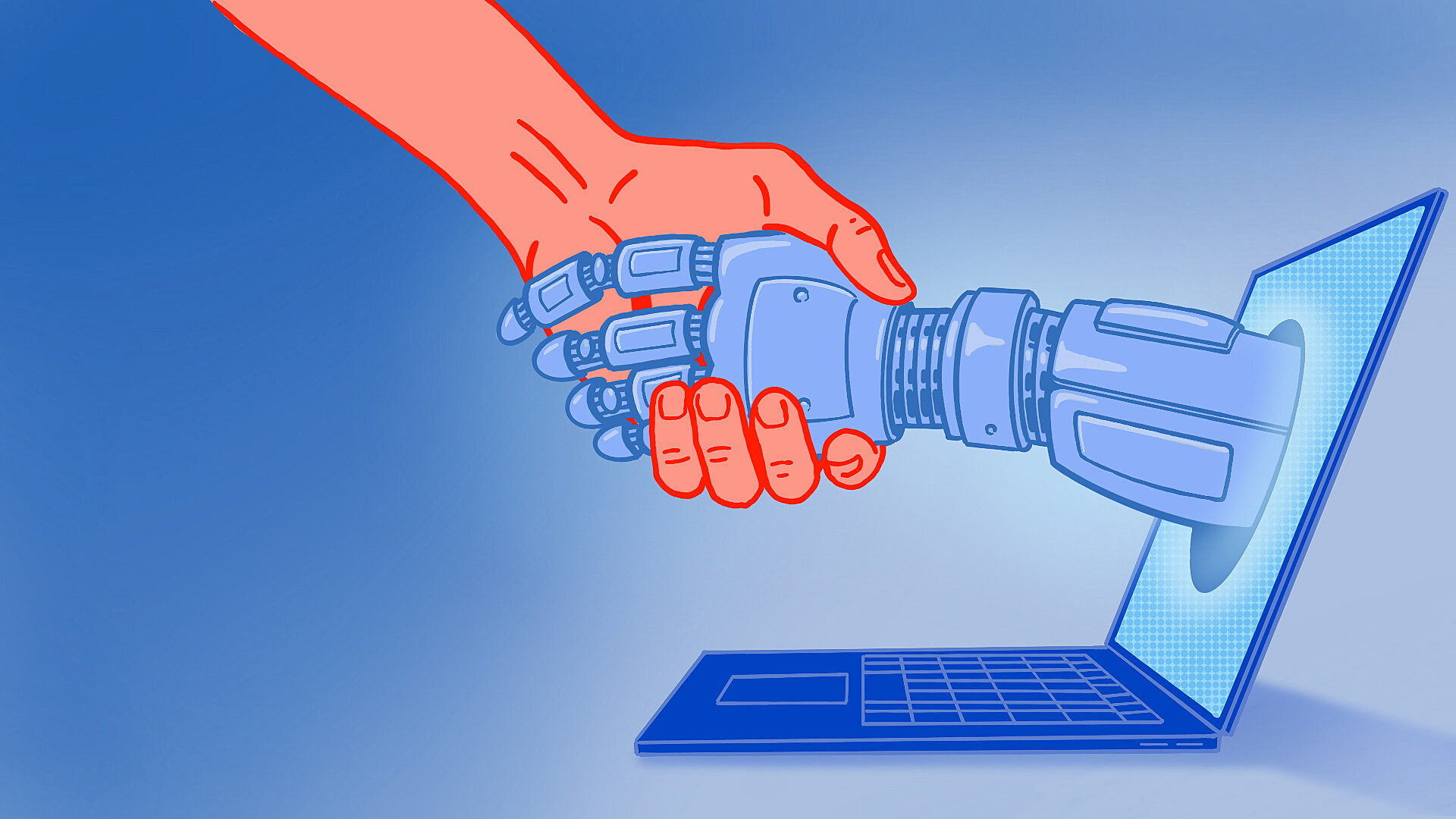
Three key factors for future-proof digital transformations
There’s no doubt that the current economic climate is putting increased pressure on managers and their teams. Budget restrictions require them to maximize the impact of digital investments and dedicate valuable time to justifying their decisions. This is true in both the private and public sectors.
On the other hand, the current technological boom means that shiny new objects emerge every week. Large language models (LLMs) and artificial intelligence (AI) are evolving faster than the masses are adopting them. Understanding how this redefines market expectations and identifying the strategic opportunities they create can be a challenge.
While design thinking remains a tried and tested method – striking a balance between business objectives, user needs and technological feasibility – it’s now necessary to inject a little foresight into our digital transformation projects.
So how can we ensure that we work in a way that’s both sustainable and profitable? It might be easier than you think...
The comments in this article were first presented by Ariane Lafleur at the Rendez-vous numérique. Her insights stem from her most recent digital transformation projects, a huge amount of reading and conversations with passionate and brilliant people on subjects such as foresight, technology, artificial intelligence, user experience (UX) and client experience (CX), governance and many others.

First of all, let’s establish what we mean by digital transformation.
Digital transformation (n.)
A strategic process through which an organization integrates technology into several aspects of its activities, changing the way it operates and delivers value to its clients.
Digital transformation isn’t just about adopting new tools. It’s more of an operational overhaul. It impacts processes, the client experience and even business models. It affects technological infrastructures and working methods. It requires teams to upgrade their skills. It necessitates an alignment of strategic vision.
Some people mistakenly believe that the major digital transformations are behind us. But many organizations are still in the process of initiating or implementing their transformation.
1. Understanding needs through research
If there’s one thing in life you can be sure of, it’s that the needs and expectations of your users will evolve less rapidly than technology. By understanding these needs and implementing a digital transformation that effectively takes them into account, you’re inevitably going to work in a more sustainable and consistent way.
Understanding user needs means understanding the mental patterns of current and future clients, employees and various key parties.
This involves doing some research to make sense of observable patterns – semi-structured interviews to understand the intentions behind SEO trends, for example. Because while quantitative data provides an overview of behaviour, qualitative data helps us better understand needs and motivations.
Sure, this approach is time-consuming, but it pays off. Coupled with your business objectives and technological capabilities, it will be the foundation of your digital transformation project. And it’s a determining factor in your success.
But is it possible on a limited budget? Yes. Take one of our recent projects as an example.
The evolution of our client’s business model meant it had to undergo a digital transformation: ecosystem, martech tools, internal processes, customer experience – the works. It had to transition from a fragmented ecosystem, in which each business unit operated in a silo, to a unified ecosystem that replicated the personalized services of the now-merged business units.
To make this transformation a success, we used a service blueprint. This is a mapping system that looks at each customer segment and provides an overview on:
Key performance indicators (KPIs) for measuring the achievement of business objectives
The stages in the customer journey
Customer interactions with employees and technology (frontstage and backstage)
The organizational processes essential to service delivery
Legal aspects to be respected
Any other information essential to the project (e.g., the importance of technology in the delivery of a segment’s service)
We obtained all the information we needed through a series of interviews with experts across all the business units.
Using the mapping system, we were able to identify convergences and divergences between customer segments and business units. This made it easier to recommend a roadmap for success in terms of business objectives, technological feasibility and user experience. In doing so, we maximized the sustainability of the digital transformation because our recommendations were anchored in clearly identified needs that evolve slowly and are supported by the relevant technology. The technology then serves as a facilitator rather than a gimmick.

2. Considering artificial intelligence (AI) as an audience in its own right
Foresight experts disagree when it comes to predicting how AI will impact our lives in the medium term. And your organization may not yet have a business case for its use. But treating it as an audience in your digital transformation will make your life easier and maximize its benefits when the time comes for you to use it.
Foresight (n.)
A discipline that explores possible futures by analyzing trends and weak signals, among other things. It helps us navigate uncertainty and guides decision-making in a changing context.
To treat AI as an audience, we need to start by understanding how it indexes our ecosystem:
When AI reads content, it ingests it all at once, even if your site contains thousands of pages and your database contains hundreds of thousands of customers.
It extracts the structure of your system and detects the hierarchy of information while capturing what’s contained in structural elements such as tables.
It understands semantics and the relationship between key concepts and ideas. Unlike humans, it doesn’t need information to be presented sequentially or on the same page and has the ability to associate dispersed information.
It creates a “mental model” where everything it ingests can be found in a network and accessed on demand.
In short, structure is key.
To optimize AI’s “comprehension,” it’s essential to structure content well, use rich metadata and organize this data consistently. This approach has a dual benefit: it improves current indexing by search engines while preparing the ground for future AI-mediated interactions.
But preparing your digital ecosystem for AI-mediated interactions also requires investing in your brand experience. The multiplication of interfaces between clients and brands leads to a certain loss of control. However, by working at the top of our conversion funnel and stimulating brand preference as much as SEO and conversion rate optimization (CRO), we can continue generating qualified traffic that’s ready to pay for our product, regardless of the search engine or context in which it’s presented.
What’s more, the creation of quality content that moves towards something more conversational and aligns with the structure and mental patterns of our users could make it easier for AI to suggest the next best actions (NBAs). The result? The conversion potential of our efforts is maximized.

3. Going back to basics: value creation, agility and structure
For a digital transformation to be successful, we need to go back to the basics. This means creating value for both the organization and its users, demonstrating agility in the design and implementation of technological solutions, and acting in a structured and considered way to ensure the resilience of the ecosystem.
Achieving this requires a clear digital strategy with KPIs that are aligned with business objectives and controlled by all the teams involved in the transformation. It requires design principles that enable us to act with resilience and robustness:
An information architecture that reflects users’ mental patterns
A flexible yet controlled taxonomy
An atomic design approach for both design and content, with reusable components to facilitate reuse
A flexible technological infrastructure and robust network APIs
A headless technological architecture
Scalable data models designed to grow over time
Ongoing performance monitoring and user testing, where relevant, to optimize the experience and avoid obsolescence
Let’s be clear – we’re not reinventing anything here – but we’re adopting best practices that are all too often overlooked.
Conclusion
A future-proof digital transformation requires systems thinking. And systems thinking means breaking down the silos in your organization and adopting a holistic view of every element in your digital ecosystem. It also means understanding your users’ needs and considering their entire lifecycle, as well as your technological capabilities and business objectives – they form a connected whole in which every element influences the next.
It also requires you to design with resilience. And to design with resilience, you need to build for adaptability rather than permanence, opt for a structured and flexible architecture, and make sure you have structured data and modular components.
It’s about iterating and evolving with changes in technology and user behaviour.
That’s how we lay a solid foundation for tomorrow while designing today. Digital transformation isn’t a destination, it’s a process!


